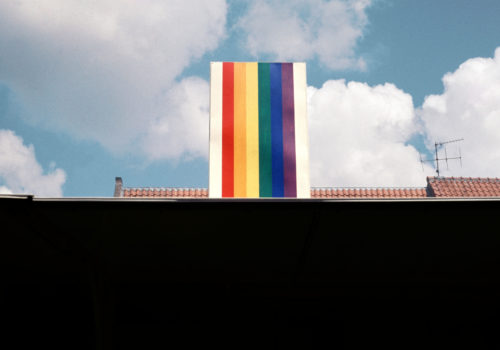For Luigi Ghirri, photography is anything but a mold of conformity. Through his simple and avant-garde photographs, Ghirri presents the world in all its complexity while simultaneously making it clearer. His book Kodachrome, reissued this year by Mack, is a reflection not only on this inimitable brand of color film, but also on the history of photography, the proliferation of images and their uses.
His photographs have the power to surprise, beginning with his framing, which completely ignores the rules of composition. Here the framing calls attention to an object, leaving the spectator to interpret it. The subjects are striking: landscapes, beaches, field, cities, French and Italian mountains, parts of houses. Each is captured with sobriety. He plays with reflections in mirrors, windows and puddles, offering insight into his imagination.
Ghirri’s photographs are also remarkable for their critical power. From the word ‘photography’ (a combination of the Greek words for ‘light’ and ‘writing’), we move to Kodachrome, a combination of chroma (color) and the name of one of the largest producers of film and cameras. Photography has become a brand. Ghirri’s photographs reproduce other images, sometimes commercial ones, from billboards, shop windows and the walls of cities. They are the perfect symbol of the massive invasion of photographs into the public space.
Today images create a sense of dependency, yet the time we devote to observing an image has grown shorter. “The role of photography today is to slow down the acceleration of the interpretation of the image,” says Ghirri. “It represents a space to observe reality, or an analogue of reality, allowing us to continue seeing things, as opposed to the movies and television, in which the perception of the image has become so fast that we no longer see anything.”
Ghirri’s photographs have little action and few decisive moments. Therein lines the political significance of his work: not falling for any ideology, a conformity dictated by the history of photography, without ever condemning others. In Kodachrome, the photographer included family photographs, press photographs and postcards, which express his categorical refusal to distinguish between genres. The work of Luigi Ghirri is an exceptional tool for educating the way we see. He teaches us to keep looking.
Jonas Cuénin
Luigi Ghirri – Kodachrome
First edition © 1978 by Edizioni punto e virgola
Second edition © 2012 MACK
€30.00 £25.00 $40.00
ISBN 9781907946240
















